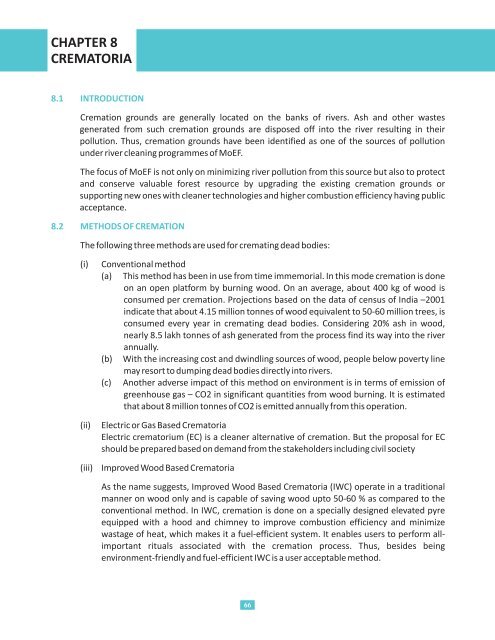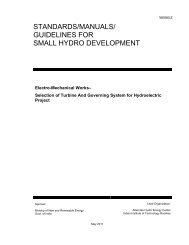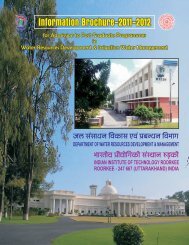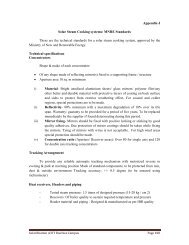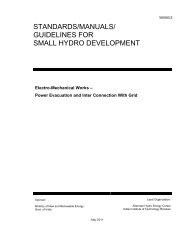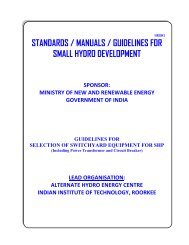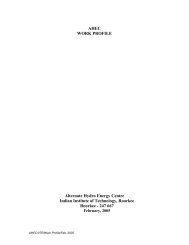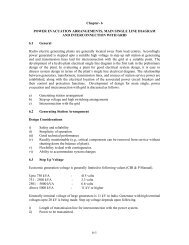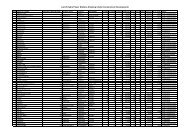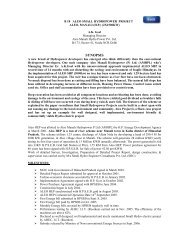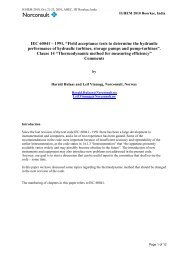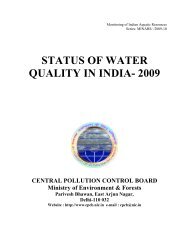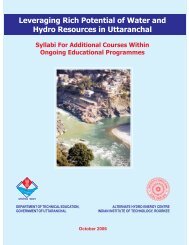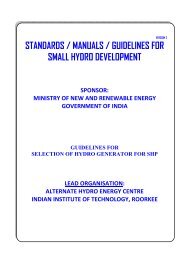annexures - Indian Institute of Technology Roorkee
annexures - Indian Institute of Technology Roorkee
annexures - Indian Institute of Technology Roorkee
You also want an ePaper? Increase the reach of your titles
YUMPU automatically turns print PDFs into web optimized ePapers that Google loves.
CHAPTER 8CREMATORIA8.1 INTRODUCTIONCremation grounds are generally located on the banks <strong>of</strong> rivers. Ash and other wastesgenerated from such cremation grounds are disposed <strong>of</strong>f into the river resulting in theirpollution. Thus, cremation grounds have been identified as one <strong>of</strong> the sources <strong>of</strong> pollutionunder river cleaning programmes <strong>of</strong> MoEF.The focus <strong>of</strong> MoEF is not only on minimizing river pollution from this source but also to protectand conserve valuable forest resource by upgrading the existing cremation grounds orsupporting new ones with cleaner technologies and higher combustion efficiency having publicacceptance.8.2 METHODS OF CREMATIONThe following three methods are used for cremating dead bodies:(i)(ii)(iii)Conventional method(a) This method has been in use from time immemorial. In this mode cremation is doneon an open platform by burning wood. On an average, about 400 kg <strong>of</strong> wood isconsumed per cremation. Projections based on the data <strong>of</strong> census <strong>of</strong> India –2001indicate that about 4.15 million tonnes <strong>of</strong> wood equivalent to 50-60 million trees, isconsumed every year in cremating dead bodies. Considering 20% ash in wood,nearly 8.5 lakh tonnes <strong>of</strong> ash generated from the process find its way into the riverannually.(b) With the increasing cost and dwindling sources <strong>of</strong> wood, people below poverty linemay resort to dumping dead bodies directly into rivers.(c) Another adverse impact <strong>of</strong> this method on environment is in terms <strong>of</strong> emission <strong>of</strong>greenhouse gas – CO2 in significant quantities from wood burning. It is estimatedthat about 8 million tonnes <strong>of</strong> CO2 is emitted annually from this operation.Electric or Gas Based CrematoriaElectric crematorium (EC) is a cleaner alternative <strong>of</strong> cremation. But the proposal for ECshould be prepared based on demand from the stakeholders including civil societyImproved Wood Based CrematoriaAs the name suggests, Improved Wood Based Crematoria (IWC) operate in a traditionalmanner on wood only and is capable <strong>of</strong> saving wood upto 50-60 % as compared to theconventional method. In IWC, cremation is done on a specially designed elevated pyreequipped with a hood and chimney to improve combustion efficiency and minimizewastage <strong>of</strong> heat, which makes it a fuel-efficient system. It enables users to perform allimportantrituals associated with the cremation process. Thus, besides beingenvironment-friendly and fuel-efficient IWC is a user acceptable method.66


